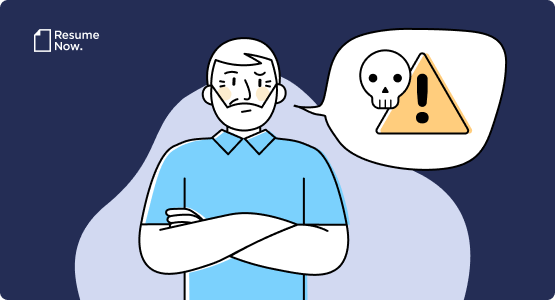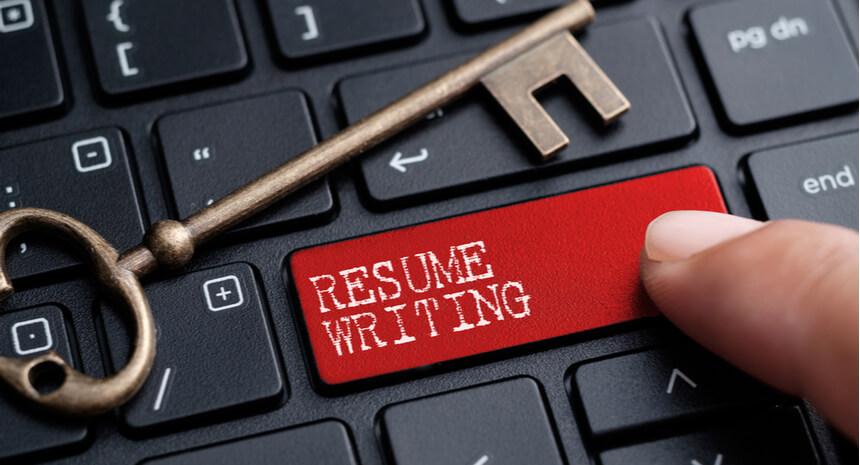When your aviation career is ready to soar, a well-written cover letter might be just what you need to get off the ground.
In the high-flying world of aviation, precision is paramount. Your cover letter is your chance to demonstrate this quality alongside your other unique skills and your passion for flight.
This guide includes:
- Popular aviation cover letter examples.
- Choosing a cover letter template for the aviation industry.
- Clear, step-by-step instructions for each section.
- Additional resources to ensure your application shines.
Ready to launch your cover letter? Our Cover Letter Generator can be your co-pilot. Choose from a range of professional styles, eliminate formatting turbulence and use our industry-specific phrases and tips to make your first draft and help your application soar.
Popular aviation cover letter example
Before you start writing your cover letter, take a look at our most popular example.
How to write an aviation cover letter
Now, let’s soar through the key components of creating a solid aviation cover letter. Even if you’re familiar with the basics of cover letter writing, focusing on these elements can make your application take off and clearly demonstrate your expertise.
Step 1
Pick an appropriate layout
Choose a cover letter template that reflects the efficiency of the aerospace sector and the culture of the company you’re applying to.
Your cover letter should embody the high standards of the aviation industry, whether it’s a modern, technical look for a cutting-edge airline or a more traditional format for an established aerospace manufacturer.
Use a clean, easy-to-read font like Arial or Helvetica. Think of your layout as an aircraft’s instrument panel — clear, organized and purposeful.
Step 2
Create a header
Ensure your contact information is clearly visible at the top of your cover letter. Include the following:
- Your full name and any relevant certifications (e.g., CPL, ATP).
- City and state.
- Phone number.
- Email address.
- LinkedIn profile or aviation-specific profiles (e.g., AOPA membership).
Preflight check: Double-check your contact info for accuracy. A typo here could lead to a missed connection with a potential employer!
Step 3
Hail the hiring manager
Begin your cover letter with a professional greeting that sets the tone. Address the hiring manager directly, such as “Dear Captain Johnson” or “Dear Mr. Boeing.” If you can’t find a specific name, “Dear Hiring Manager” or “Dear [Airline/Company Name] Recruitment Team” can work just fine.
If the hiring manager’s name isn’t on the radar, try checking the company’s website or professional aviation networks. Showing you’ve done your research demonstrates your attention to detail.
Step 4
Write an engaging opener
Kick off your cover letter by introducing yourself and explaining your passion for aviation. This is your chance to grab the hiring manager’s attention by linking your enthusiasm for flight with the airline’s values.
Start with a memorable flight experience or a pivotal moment in your aviation career that inspired you. This helps to create a vivid picture and sets the tone for your letter.
Step 5
Detail your main achievements
Use two to three paragraphs to outline your job history.
Be specific: mention the roles you’ve held, the types of aircraft you’ve worked on and any significant challenges you’ve overcome. Show how these experiences have prepared you for the position you’re applying for.
Use concrete examples. Instead of saying “supervised flight operations,” say “successfully managed operations for a fleet of 15 aircrafts, ensuring a 95% on-time departure rate and enhancing safety protocols.”
Step 6
Highlight your skills
In aviation, your hard and soft skills are equally important.
Highlight your technical skills, such as aircraft maintenance, navigation and proficiency with aviation software, and emphasize soft skills like problem-solving, leadership and communication.
Provide specific examples that illustrate your skills in action. For instance, describe a time when your problem-solving skills prevented a potential delay or how your communication skills improved team coordination.
Step 7
Conclude with enthusiasm
Wrap up your letter by expressing your excitement about the role and thanking the hiring manager for considering your application. Highlight why you’re particularly interested in this airline.
Mention a specific aspect of the company that excites you, such as their innovative technology or commitment to customer service. For example, “I am particularly excited about your airline’s focus on pioneering sustainable aviation technologies.”
Step 8
Sign off professionally
End your cover letter with a courteous signoff like “Sincerely” or “Best regards,” followed by your name. This adds a professional touch to your application.
For physical submissions, use high-quality paper and sign your name in ink. For digital submissions, consider including a clean, digital signature to add a professional touch.
resumes made with Resume Now!
More aviation cover letter examples
As you soar to new heights in your aviation career, the format and content of your cover letter should evolve to reflect your growing expertise and achievements.
Below are a couple of examples tailored for different stages in an aviation professional’s career, from entry-level to seasoned expert.
Entry-level cover letter
Why this aviation cover letter works:
- Shows clear enthusiasm
Judy clearly states her interest in the flight attendant position and expresses genuine enthusiasm for joining Endeavor Air.
- Relevant training and professional experience
Judy highlights her training at Sky High Aviation Academy, emphasizing practical experience such as conducting preflight safety checks and participating in simulated emergency situations.
- Strong closing and call to action
She concludes the letter by expressing her anticipation for discussing her application further and provides clear contact information for a very proactive approach.
Experienced cover letter
Why this aviation cover letter works:
- Demonstrates experience
Billy clearly highlights his 15 years of experience as an airline captain, establishing his deep expertise in flight operations.
- Impressive track record
Billy also mentions specific accomplishments, such as accumulating over 10,000 flight hours and maintaining an impeccable safety record.
- Strong professional closing
Billy concludes with a confident and professional closing, expressing his eagerness to contribute to American Airlines.
Refresh your resume
Your resume is crucial in landing your next aviation role, so ensure it’s current and aligned with your cover letter design. This cohesive approach adds a layer of professionalism to your application.
Whether you’re crafting a new resume or updating an existing one, our collection of resume examples can be a valuable resource. These examples, created by professional resume writers, provide insights into what makes a standout aviation resume.
For a quick and efficient update, consider using a AI resume builder. These tools offer ready-to-use skills and phrases tailored for aviation roles, along with a variety of professional, ATS-friendly templates.
One final note about your resume — Include a section detailing your flight hours, certifications and any special training. This specific information can make your resume stand out in the aviation industry.
Key takeaways for your aviation cover letter
Relevance is key
Throughout your cover letter, show that you’ve researched the company and understand its values and mission.
Highlight your experience
Clearly outline your aviation experience, including flight hours and specific accomplishments. Use metrics to showcase your achievements, such as improvements in safety and passenger satisfaction.
Use professional formatting
Use clean, modern designs that are easy to read and ATS-friendly. Stick to professional fonts like Calibri, Arial or Times New Roman and use color sparingly.
Write a compelling opener and closer
Start your cover letter with an engaging introduction that captures your passion for aviation and aligns with the company’s mission.
Showcase a range of skills
Emphasize both your technical skills (e.g., aircraft maintenance, navigation, use of aviation software) and soft skills (e.g., leadership, communication, problem-solving).
Resources to help you prepare for your interview
Was this information about Aviation Cover Letter: Examples, Templates & Tips helpful? Let us know!
Don is a Certified Professional Resume Writer (CPRW) with more than 10 years’ experience creating digital content, including four years helping job seekers develop their careers. He holds an M.S. in Journalism from Northwestern University.
More resources

What if I Don't Have Professional References?
Access advice on what to do if you get to the reference check ...

The Most Dangerous Jobs in America: Some Pay Less Than $40K, Others Top $190K
Resume Now s report reveals the highest and lowest paying dang...

How to Write a Resume: Guide & Examples for 2025
If you re wondering how to write a resume that grabs attenti...

Preschool Teacher Cover Letter: Examples, Templates & Writing Tips For 2025
Want to build an A preschool teacher cover letter that puts y...

Software Developer Cover Letter: Examples, Templates & Writing Tips For 2025
Want to write a software developer cover letter that gets noti...

Logistics Manager Cover Letter: Examples, Templates & Writing Tips For 2025
Need a logistics manager cover letter that demonstrates your p...
